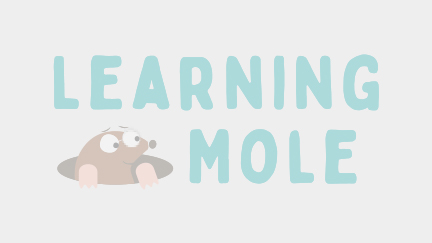
Maths Treasure Hunt: Uncovering Secrets in the Playful World of Numbers
Table of Contents
Maths can often feel like a dense jungle for learners, with a myriad of concepts and problems hiding around every corner. But what if we approached this jungle as a thrilling treasure hunt? Just as with any great adventure, finding treasure involves solving a series of puzzles, using a map, and sometimes, teamwork. In the realm of mathematics, we piece together clues and use our problem-solving toolkit to navigate the challenges, decoding riddles of numbers and patterns as we go. The sense of achievement when we crack a mathematical code is akin to discovering hidden treasure.

We believe that making the journey through mathematics an interactive and joyful quest can transform learning into an engaging and meaningful experience. Exploring the landscapes of algebra, geometry, and beyond can be as fascinating as a treasure hunt, filled with moments of eureka where solutions reveal themselves like uncovered gems. For a child, the satisfaction of solving a tricky equation or a complex puzzle is the same rush of excitement felt when unearthing a long-sought treasure. By framing maths in the context of discovery, we’re not only teaching mathematical concepts but also instilling a love for the subject that can last a lifetime.
Key Takeaways
- Maths can be approached as an exciting treasure hunt, turning challenges into engaging puzzles.
- Integrating interactivity into maths learning makes concepts more accessible and enjoyable.
- Encouraging exploration within maths can foster a deeper, more passionate engagement with the subject.
Embarking on the Adventure

As we prepare to set off on our Maths Treasure Hunt, it’s important to comprehend the intricacies of the game and ensure we’re well-equipped for the journey ahead. We’re about to dive into a world where numbers create a labyrinth of challenges, and only the right tools and understanding can guarantee success in our educational quest.
Understanding the Game
The Maths Treasure Hunt is a captivating educational venture, where each clue solved propels us closer to uncovering the secrets hidden within the number jungle. In this game, our strategy revolves around decoding mathematical puzzles and connecting with fundamental concepts. It’s an intellectual expedition that not only tests our arithmetic skills but also enhances them.
Equipment Required
Before venturing into the number jungle, it’s crucial to assemble our arsenal:
- Interactive Tutorials: These are our compass in the wilderness, offering guidance and insight that pave our path towards the treasure.
- Activity Sheets: Consider these as our map, charting the course of our journey with problems that challenge and stimulate our minds.
- Support Tools: These include lesson plans and hands-on activities, serving as our survival kit to navigate through complex mathematical terrains.
By equipping ourselves with these resources, we transform our home into a strategic base camp, where learning and adventure coalesce. As we progress, these tools not only become extensions of our intellect but also beacons that illuminate the path to mathematical mastery.
With everything in place, we’re now ready to step into the game, turning each corner of the number jungle with confidence and excitement. Let’s embark on this adventure together, and unravel the wonders of mathematics awaiting us.
The Maths Toolbox
In our Maths Treasure Hunt, the “Maths Toolbox” is essential for navigating the challenges we face within the number jungle. It’s packed with strategies and resources to solve problems effectively.
Strategies for Solutions
To approach our number jungle with confidence, we adopt robust strategies that guide us towards correct answers. Our guesses evolve into educated predictions as we apply these methods:
- Logical Reasoning: Break down complex problems into simpler parts.
- Pattern Recognition: Identify sequences to predict future outcomes.
Adapting such strategies ensures that we don’t just stumble upon solutions; we build a pathway to each answer with intent and understanding.
Leveraging Resources
We’re equipped with an array of resources that complement our problem-solving strategies. Crucial among these are:
- Interactive Tutorials: For visual and hands-on practice.
- Informative Articles: Offering deep dives into specific mathematical concepts.
Using these tools not only supports our learning but also enriches our experience within the number jungle, ensuring that we have every opportunity to flourish in our mathematical quest.
Navigating Number Grids
In our journey through the mathematical wilderness, we recognise the power of number grids as a fundamental tool for honing our numerical navigation skills. Let’s embark on mastering these grids together.
Mastering Coordinates
Our quest begins by understanding that every point on a grid is determined by a pair of coordinates. These act as the grid’s addressing system. For Level 1, we often start with simple two-dimensional grids, where the x-coordinate (horizontal placement) and y-coordinate (vertical placement) are our guides. For instance, the point (3, 2) tells us to move 3 steps across and 2 steps up.
Grids and Patterns
Number grids also reveal patterns that we can exploit. As we move horizontally or vertically across the grid, sequences emerge. Take a typical multiplication grid: the numbers in each row or column form a multiples sequence. This pattern helps us quickly determine results, such as 7×7 landing us on 49 without individual calculations.
Shape Mysteries Unlocked
Exploring the realm of shapes in mathematics can be akin to embarking on a treasure hunt, where each shape holds its own set of rules and secrets to be unravelled. As we journey through the “Number Jungle”, we uncover the mysteries of specific shapes such as cuboids, spherical beads, and the conundrums of triangle puzzles.
The Cuboid Quest
Our quest begins with the cuboid, a 3-dimensional figure defined by its six rectangular faces. When tackling problems involving cuboids, we must consider their length, width, and height to unlock their volumetric secrets. For instance, when calculating the space within a jewellery box to determine how many bracelets it can contain, we apply the formula Volume = length × width × height.
Spherical Beads and Their Secrets
Moving on, we delve into the secrets of spherical beads. These objects challenge us to think beyond flat surfaces and consider symmetry in three dimensions. Consider the design of a bracelet with evenly-spaced beads; we must calculate the circumference of each bead and the bracelet to ensure a seamless fit.
Solving the Triangles Puzzle
Lastly, we confront the triangles puzzle. The challenge involves arranging multiple triangles, such as in the four triangles puzzle, to form a specific shape without overlaps or gaps. These puzzles often require us to apply geometric principles and spatial reasoning to piece together the solution.
Chasing Mathematical Treasures
In our Maths Treasure Hunt, we not only explore numbers and equations but also entice young minds to embark on an adventure through mathematics. Our journey is filled with intriguing patterns to discover and progressive challenges that motivate learners to ascend to higher levels of understanding.
Discovering Patterns
Our quest to uncover treasures begins with recognising patterns. We see patterns as the map that guides us through the number jungle. It’s not just about taking a glimpse but about understanding the sequence and regularity within numbers. For example, in Level 2, we might find that numbers follow a simple addition pattern, such as increasing by two each time. These discoveries are treasures in themselves, shining like gold nuggets that reveal the path forward.
Progression Through Levels
As we progress to Level 3 and beyond, each level provides a more complex landscape filled with greater mathematical challenges. Level 4 elevates the experience, demanding a blend of critical thinking and creative problem-solving. At this stage, young mathematicians must apply their pattern recognition skills to unlock the next treasure. The levels are like layers of the jungle, each concealing its unique riddles and bounties, compelling us onward in our scholarly expedition.
By engaging with mathematical puzzles and manoeuvring through each level, learners build confidence and a sense of achievement. These mathematical treasures are not just the answers to problems; they represent milestones in the educational journey, affirming that every challenge solved is both a lesson learned and a victory won.
Puzzles and Challenges
In our quest to make mathematics both fun and engaging, we’ve integrated various puzzles and challenges that prompt learners to navigate the complexities of numbers with joyous curiosity.
Level-Based Challenges
We begin with Level-Based Challenges, where tasks are tailored to correspond with different stages of math proficiency. These challenges range from simple arithmetic problems for beginners to complex equations for those further along their mathematical journey. Each level is designed to build upon the last, ensuring a progressive increase in difficulty. Learners get to explore concepts at their own pace, moving onto the next stage only when they’re ready.
Through our interactive quests, students experience the excitement of maths beyond traditional methods. By incorporating nrich visuals and interactive elements, our learners feel like they’re embarking on an adventure. They aren’t just working through problems; they’re on a mission to find treasures hidden within the math jungle. As they progress, they collect rewards that mark their achievements and keep them motivated.
Interactive Quests
The Interactive Quests take this form of exploration even further. We believe that learning maths should be more than just studying; it should be about exploring and doing. That’s why our challenges often come with an engaging image or scenario that requires students to apply their knowledge in a practical context. As they interact with the material, they’re not only practising their maths skills, but also honing their problem-solving abilities. It’s interactivity that truly captivates, leading to a deeper and more meaningful learning experience.
Journey through Geometry
Embarking on our journey through the world of geometry brings to mind vivid images of triangles puzzle challenges and spherical beads adding an air of mystique to the mathematical trek. As we weave through the theoretical underbrush, we find ourselves faced with intricate patterns that unlock the secrets of spaces both vast and confined.
Conquering Triangles
With a courageous stride, we tackle the enduring puzzles that triangles pose. These three-sided figures may seem simple at first glance, yet their angles and sides hide complex relationships awaiting discovery. Consider, for instance, the enigma of determining a triangle’s area from minimal information. Using the sine rules or Heron’s formula, one can unearth the solution much like finding a hidden treasure in an overgrown jungle.
Circular Logic
Moving in a loop, the elegance of circles captivates us. These perfect curves, made from an endless series of spherical beads, offer a playground for the intellect. A circle’s circumference dances with pi, an irrational number that never ends nor repeats, much like the quest for knowledge itself. Whether it’s the wheels on a bicycle or the planets orbiting the sun, circular logic prevails, granting us insight into the cycles that permeate our universe.
Algebraic Trails

In the vibrant world of mathematics, algebraic trails lead us through a jungle of numbers and operations. These trails are the pathways to unlocking the mysteries posed by algebraic questions.
Formulating Equations
When we come across mathematical problems, our first step on the algebraic trail is to formulate equations that represent the scenarios. This process involves identifying the variables involved and clearly establishing the relationships between them. For instance, if we’re tasked with understanding how two numbers add up to ten, we’d establish an equation such as x + y = 10, where x and y are the numbers we’re trying to find.
Exploration of Variables
As we venture further down the trail, our exploration of variables becomes more intricate. We seek out the values of unknowns that satisfy our equations, which is comparable to discovering hidden treasures. At the level 3 complexity, we might deal with multiple variables and equations, where each discovery of a number sheds light on the rest of the puzzle.
Through mastery of these trails, young learners can grow confident in their mathematical journeys, developing a solid grounding in not just algebra, but in all areas of learning.
Colourful Quests in Maths

We’ve created a vibrant landscape where mathematical challenges are not just problems to solve, but adventures to embark on. The allure of colour in our quests not only makes learning maths a visual delight but also deepens understanding through engaging and memorable experiences.
Colour-Coded Conundrums
In the world of mathematics, colours add an extra layer of excitement and intrigue. Imagine weaving through a jungle of numbers where colourful bracelets act as guides to hidden numerical treasures. Each hue on the bracelet represents a different mathematical element — perhaps red for primes or blue for multiples of two. By following these colour-coded clues, one uncovers the patterns that unlock the secrets of the puzzle.
The Loop of Colours
A different kind of quest involves the use of an image — a loop showing a spectrum of colours. Each segment of the loop stands for a distinct step in the problem-solving process. As we traverse the loop, we move from comprehension to strategy and ultimately to solving the puzzle. It’s a visual reminder that maths can be a loop of discovery, where the way forward is as colourful as it is clear.
By embedding the excitement of a treasure hunt into the fabric of mathematical learning, we turn abstract concepts into a vivid and approachable game. Engaging with numbers in this way is just one part of our commitment to make education an enthralling adventure — one bracelet, one colour, one solution at a time.
Paper and Pencil Games
In our exploration of numbers and patterns, we often turn to paper and pencil games as a method of facilitating interactivity and learning. These simple yet engaging games can be a fantastic way to draw connections between numerical concepts and tangible actions.
The Role of Squared Paper
Squared paper, with its grid of squares, acts as a foundation for many paper and pencil games. It’s particularly useful when we need precision for drawing shapes, plotting graphs, or creating intricate patterns. For learners, the uniformity of the grid supports the development of spatial awareness and helps in understanding the geometric properties of shapes.
Drawing and Measuring
Focusing on drawing and measuring in a maths treasure hunt game, we ensure that our players get hands-on experience with essential mathematical skills. Using a pencil to draw directly on the squared paper enables players to accurately measure distances and angles, turning abstract maths concepts into something that can be seen and touched. This approach makes the abstract nature of mathematics more concrete, bridging the gap between theory and practical application.
Engagement through Interactivity
In today’s digital learning landscape, we recognise the importance of maintaining student enthusiasm for subjects like mathematics, which can often seem daunting. Through the use of interactive tools and technology-infused learning, we can transform mathematical education into a truly engaging experience.
Interactive Learning Tools
We offer a range of interactive learning tools designed to make the exploration of mathematics exciting. These tools are more than just digital versions of traditional worksheets; they’re rich experiences that allow students to manipulate variables, visualise problems, and see the immediate impact of their actions. An example includes a Treasure Hunt game where learners must solve maths puzzles to advance on a virtual map, turning the abstract world of numbers into a captivating quest through a jungle of numeracy.
- Maths Puzzles: Encounter challenges that adapt to skill level.
- Virtual Map: Visual journey representing progress.
- Immediate Feedback: Understand mistakes and correct them in real-time.
Fostering Enthusiasm with Technology
By harnessing technology, we infuse traditional maths content with exhilaration. Utilising apps like those where students engage in interactive storytelling—such as a pirate treasure hunt—can significantly enhance enthusiasm and investment in learning. These applications provide a storyline where maths becomes the tool for advancement, and rewards and feedback are intrinsic to the journey.
- Story-driven Learning: Maths intertwined with engaging narratives.
- Enhanced Interactivity: Engage with maths concepts through interactive features.
- Rich Rewards: Earn treasure and accomplishments for successful problem-solving.
By fostering an environment where learning feels like play, we empower students to delve into maths with an adventurous spirit and an open mind.
Frequently Asked Questions
When it comes to bringing excitement into mathematics, few activities can match a Maths Treasure Hunt. It’s a delightful way to combine the thrill of discovery with the challenge of problem-solving in numbers.
How can one solve clues typically found in a treasure hunt?
In a treasure hunt, clues are often solved by applying critical thinking and mathematical skills. This could involve cracking codes using number sequences, solving puzzles that require understanding of geometric shapes, or answering riddles that incorporate basic arithmetic or algebra.
What are some examples of excellent clues for a treasure hunt?
Great clues could range from simple riddles that lead to the next location, to complex equations or word problems that reveal coordinates. “What has keys but can’t open locks?” could lead to a piano in a music room, where the next clue is hidden.
What is the best way to organise a riddle scavenger hunt?
The best way is to start by defining the age group of participants, then crafting riddles that are age-appropriate. Ensure clues are challenging but solvable, and the hunt is structured so that each riddle logically leads to the next location.
Are there any resources available for setting up a mathematics-themed treasure hunt?
Yes, there are numerous resources online. Websites like LearningMole offer a variety of educational tools and tips that can be adapted to create an engaging maths treasure hunt.
How do participants find solutions during a maths-based treasure hunt?
Participants usually work in teams to discuss and solve each mathematical challenge. They might use paper and pencil or digital devices to calculate answers, employing various maths skills depending on the complexity of the clues.
Where might I find free materials to host my own maths treasure hunt?
There are educational websites that provide free resources, worksheets, and activity ideas for setting up your own math-themed treasure hunt, often complete with ready-to-use clues and riddles.


Leave a Reply